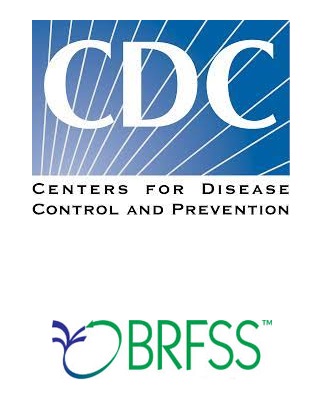The Behavioral Risk Factor Surveillance System (BRFSS) is the nation’s premier system of health-related telephone surveys that collect state data about U.S. residents regarding their health-related risk behaviors, chronic health conditions, and use of preventive services. Established in 1984 with 15 states, BRFSS now collects data in all 50 states as well as the District of Columbia and three U.S. territories. BRFSS completes more than 400,000 adult interviews each year, making it the largest continuously conducted health survey system in the world (http://cdc.gov/brfss)
Often times, public health interventions and evaluations lack scientifically sound baseline data due to sampling methods and sparsely populated counties. One standard solution is to collapse several years of data to reach a direct measure. This method does not allow, however, for rigorous evaluation of intervention impacts. Our modeling approach focuses on combining sparsely collected health data, and developing modeling techniques which allow us to temporally and spatially refine this data. We then use the resultant data in additional machine learning models, which focus on more complex health-related issues, which may be associated with other areas, including: economics, the environment, social outcomes, and food security. Our work provides regional and state public health agencies, as well as other health organizations, with baseline county level data never available before. These county level data can aid policy leaders, funders, researches and public health decision makers in their efforts to assess, improve, and monitor health across the United States. Our BRFSS modeling work uses population synthesis and microsimulation techniques to estimate health indicators at a county level. Our recent focus has been on applications to data for the state of Idaho – but our ongoing research is exploring alternative regions, additional health indicators, and differing techniques (geographically weighted regression, simulated annealing) to improve performance.

Current BRFSS Projects
- BRFSS modeling for the State of Idaho: in 2020-2021, we developed an iterative proportional fitting (ipf) modeling approach to downscale health district level data to a county level, for the state of Idaho. See our Fall 2021 presentation to the state of Idaho. We additionally have a 2023 paper in Population, Space, and Place.
- BRFSS Modeling and COVID-19 Indicators: Our BRFSS COVID indicators project is working to use BRFSS data to construct COVID-19 indicators which can be used to model and predict COVID-19 fatality rates, deaths, and cases.
- Idaho Tobacco Modeling: Our team has a multi-year project, funded by the state of Idaho, to examine tobacco usage using 2021 BRFSS data.
BRFSS Presentations
BRFSS Idaho presentation Spring 2021
BRFSS State of Idaho presentation September 2021
